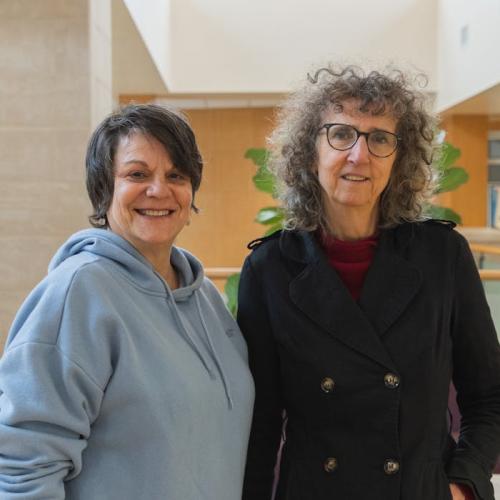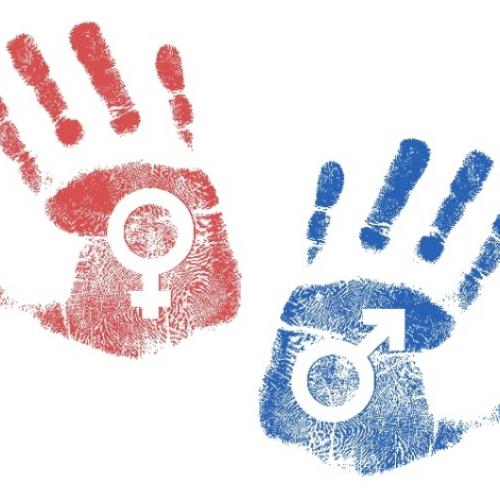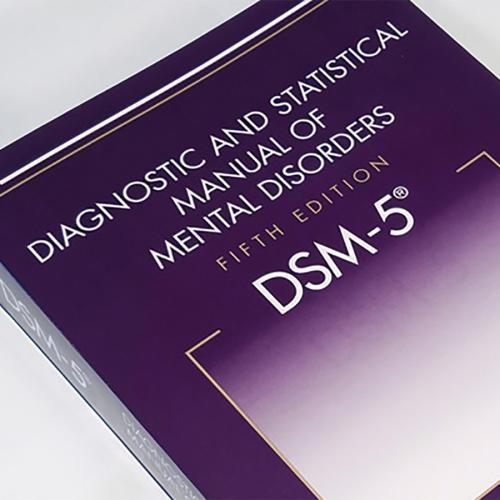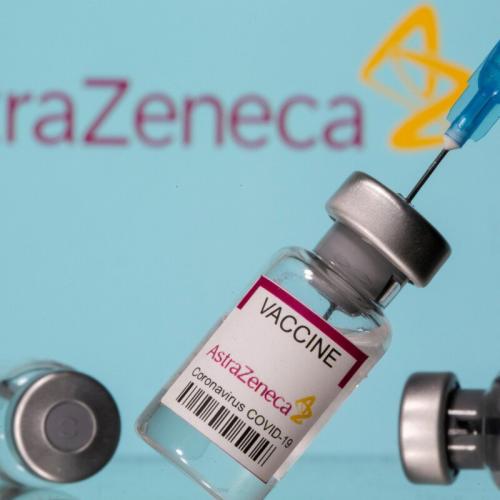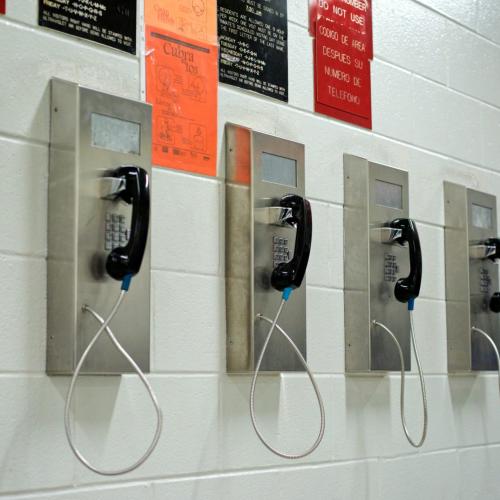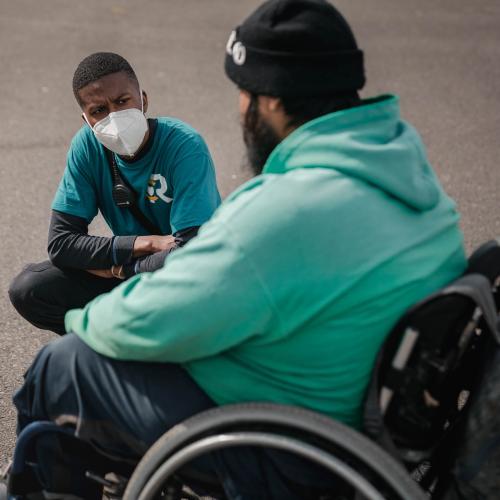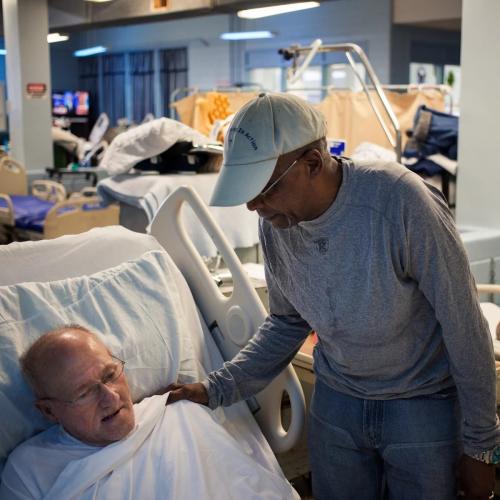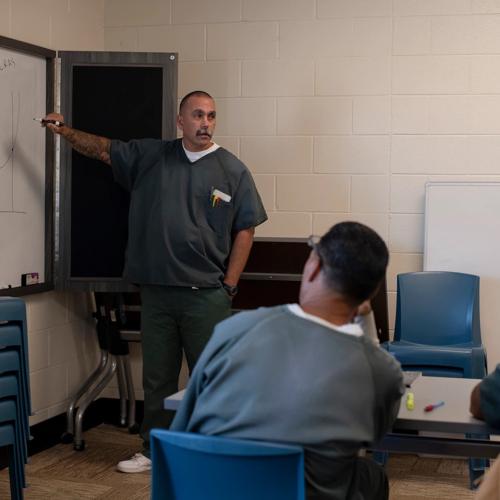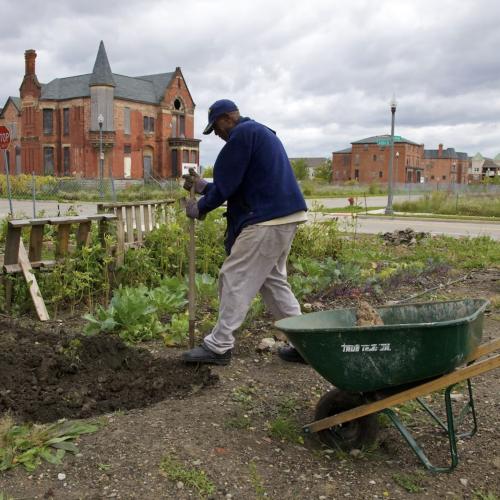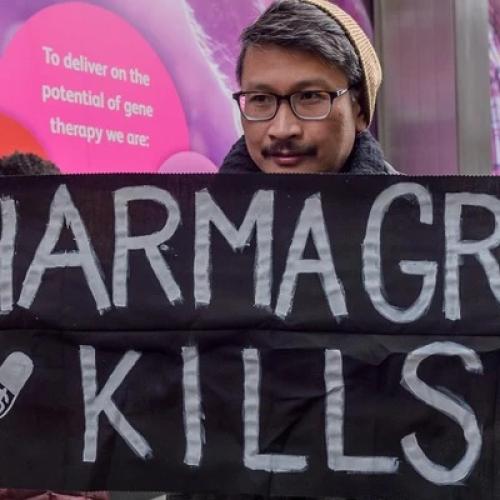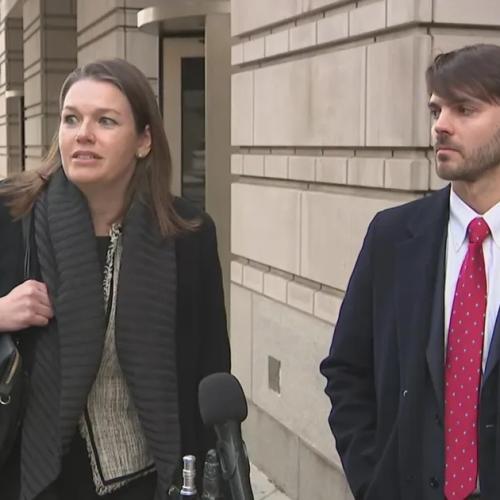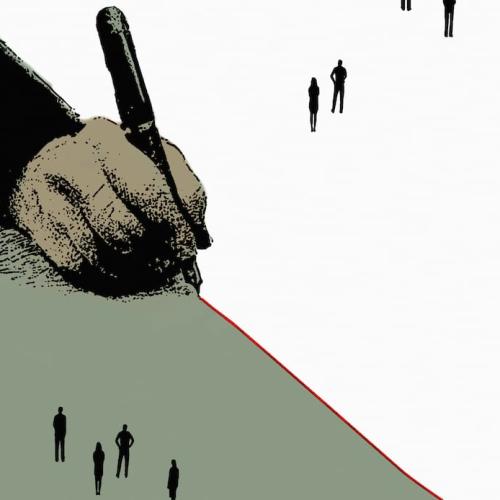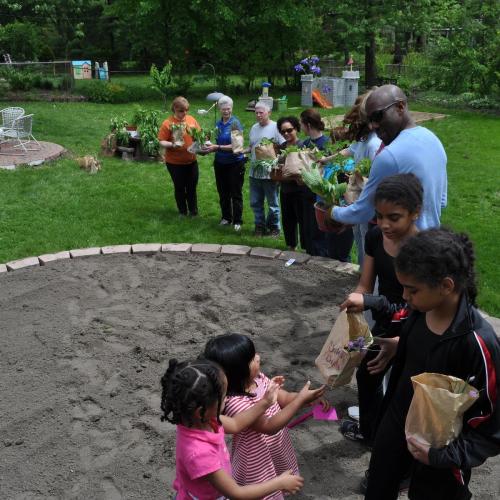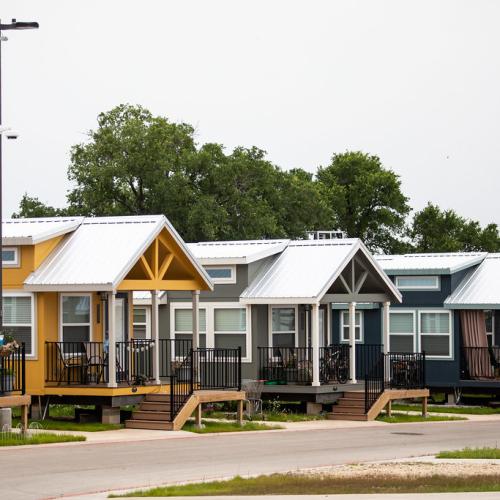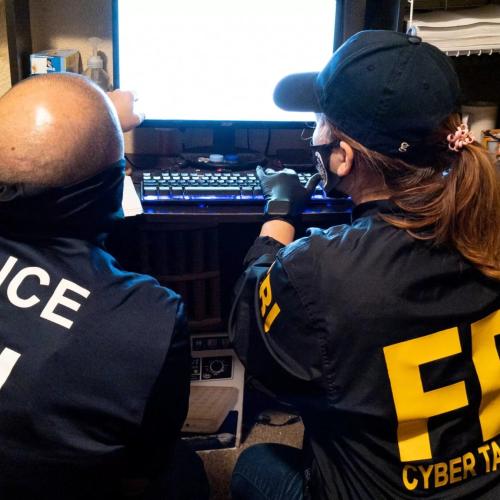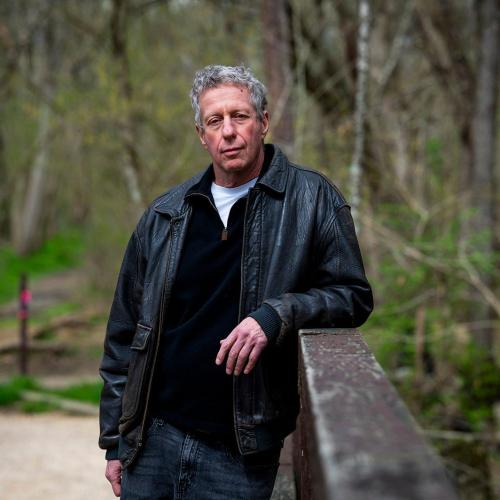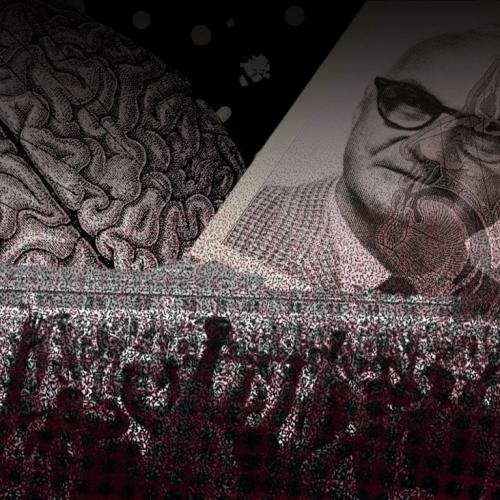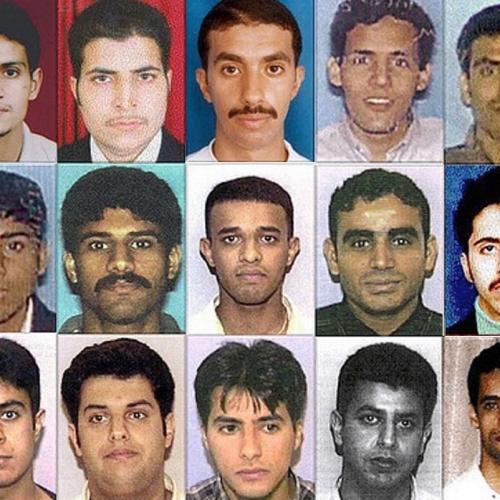Inspiring: Repairing Our Criminal Justice System News Stories
Below are key excerpts of inspiring news articles on repairing our criminal justice system from reliable news media sources. If any link fails to function, a paywall blocks full access, or the article is no longer available, try these digital tools.
For further exploration, delve into our Inspiration Center.
“Nelson Mandela – I’d never heard the name before in my life,” a former prison guard to the South African icon recalls. Christo Brand casts his mind back to 1978, and his first night guarding one of the most influential people of the past century. He was just 19 years old. A sergeant informed him the ageing man sleeping uncomfortably on the floor of the Robben Island jail cell was “a terrorist trying to overthrow your country”. Mr Brand ... soon became close with Mandela. He began to spend days and nights with Mandela, who he says remained charming even after some 16 years as prisoner 466/64. In time he saw virtue in the older man’s crimes. Reflecting after years at Mandela’s side, years in which he saw his friend slowly but surely topple the old order, Mr Brand says: “Mandela was fighting for the freedom of the country, he was prepared to go to the gallows for freedom for his people”. “When Mandela was in prison,” Mr Brand says, “he studied Martin Luther King and Gandhi, he tried to follow their footsteps and try to bring a change.” In his memoir Long Walk to Freedom, Mandela hints at why he kept his prison officer at his side even after being freed. Mr Brand, he writes, “reinforced my belief in the essential humanity even of those who had kept me behind bars”. Mandela emerged from prison in 1990 already negotiating with South Africa’s leadership for the changes that would see the country’s first democratic election a few years later.
Note: Read more on Nelson Mandela's powerful capacity for empathy, and how he served as a striking role model for addressing the hearts, not minds, of people we deem as opponents or oppressors.
The odds are against former prisoners in the U.S. when it comes to staying out of incarceration. About eight in 10 who were released from prison in 2005 were arrested again at least once by 2014, according to the most recent study by the U.S. Department of Justice. And the risk of former prisoners recidivism is highest the first year after release — about 44 percent of state prisoners were arrested again within a year of release. Formerly incarcerated people are nearly 10 times as likely to be homeless as the average American. Weld Seattle, a nonprofit based in Washington state, aims to reduce homelessness by using vacant buildings as temporary housing until development officially begins. In total, Weld Seattle has housed 125 people and has seen 43 residents move on to independent permanent housing. In 2018, formerly incarcerated people faced an unemployment rate of 27 percent. That’s higher than the unemployment rate was for all Americans during the peak of the Great Depression. Having proper business attire may not solve the unemployment problem, but it can help former inmates get a foot in the door with potential employers. The New York nonprofit 100 Suits for 100 Men is committed to giving recently released men, women and gender non-conforming people a “boutique experience.” Founded by Kevin Livingston, the organization has given out more than 13,200 suits since 2011, and more than 800 since the start of this year.
Note: Explore a treasure trove of concise summaries of incredibly inspiring news articles which will inspire you to make a difference.
As a teenager, Phil Miller dreamt of becoming a CIA field officer. But incarceration derailed that dream. Miller became a jailhouse lawyer — an incarcerated person who informally helps others challenge their convictions while in prison. This year, he’s finishing his first year of law school at the City University of New York. But, he says, he wouldn’t be where he is without support: at CUNY Law that came from the Formerly Incarcerated Law Students Advocacy Association (FILSAA). FILSAA is part of a growing movement of organizations working to change the overwhelming scrutiny that discourages — and often disqualifies — people with records from pursuing a law degree. The National Inventory of Collateral Consequences of Conviction catalogues around 40,000 official restrictions limiting or excluding people with convictions from accessing employment, education and more in the United States. While other organizations work to tackle the barriers to the Bar on a political level, FILSAA works on a deceptively simple level, offering free LSAT training, mentorship and a needed supportive space at school for people with records. FILSAA’s impact has been small in numbers but deep in value. Thanks to what Williams calls “mythbusting” YouTube videos, they’ve heard this year from 12 currently or formerly incarcerated people expressing interest. “Hope is a necessity. It’s like food and air,” [Miller] says. “Finding out there’s something that other people value you for, that can help you take yourself seriously.”
Note: Explore a treasure trove of concise summaries of incredibly inspiring news articles which will inspire you to make a difference.
Zach Skow [is] a man on a mission to bring dogs into every US prison. Skow is the founder of Pawsitive Change, a rehabilitation programme that pairs rescue dogs with inmates. He began a pilot programme at California City Correctional Facility in January 2016, teaching inmates to become dog trainers, and it’s now been rolled out to four more California state prisons and one female juvenile correction centre. To date more than 300 men have graduated from the programme and roughly 200 dogs from “high-kill” shelters have been rescued and adopted as a result of the inmates’ work with them (the shelters accept any animal [and] euthanise a certain percentage if they can’t rehome them). Seventeen of the programme’s human graduates have been paroled and so far none has returned to prison (at a time when the US recidivism rate stands at 43%). Working with the dogs and seeing what the animals are going through prompts the men to speak of their own experiences. When one student relates how his dog didn’t want to come out of the kennel in the first few days, another shares how he too didn’t want to leave his cell when he first came to prison. Many of these men have been told repeatedly from a young age that they’re not to be trusted, that they make a mess of things, that they’re not fit to take charge of anything. This message is then reinforced ... through the penal system. This programme challenges the “branding” these men have had imposed on them from an early age. It allows them to create new narratives.
Note: Watch a beautiful 4-minute video of an inmate and his beloved pup. Explore a treasure trove of concise summaries of incredibly inspiring news articles which will inspire you to make a difference.
Voters in four states approved ballot measures that will change their state constitutions to prohibit slavery and forcing someone to work against their will as punishment for crime. The initiatives won’t force immediate changes in the states’ prisons, but they may invite legal challenges over the practice of pressuring prisoners to work under threat of punishment or loss of privileges if they refuse the work. The results were celebrated among anti-slavery advocates, including those pushing to further amend the U.S. Constitution, which prohibits enslavement and forced work except as a form of criminal punishment. Nearly 160 years after enslaved Africans and their descendants were released from bondage through ratification of the 13th Amendment, the slavery exception continues to allow jails and prisons to use inmates for low-cost labor. U.S. Senator Jeff Merkley of Oregon and Representative Nikema Williams of Georgia, both Democrats, reintroduced legislation to revise the 13th Amendment to end the slavery exception. If it wins approval in Congress, the constitutional amendment must be ratified (approved) by three-fourths of the states. After Tuesday’s vote, more than a dozen states still have constitutions that include language permitting slavery and forced labor for prisoners. Prison labor is a multibillion-dollar practice. Workers usually make less than $1 per hour, sometimes only pennies. Prisoners who refuse to work can be denied privileges such as phone calls and visits with family.
Note: Explore a treasure trove of concise summaries of incredibly inspiring news articles which will inspire you to make a difference.
San Francisco and Sioux Falls might seem to share little beyond an abbreviation, but the cities wrestle with a common problem: homelessness. Now the two regions are set to test a new approach to controlling homelessness by targeting the link between housing instability and incarceration. The Just Home Project, devised and funded by the MacArthur Foundation, and coordinated by the Urban Institute, will provide resources and technical assistance to four jurisdictions across the U.S. that struggle with different variations on the jail-to-homelessness cycle: South Carolina’s Charleston County, Oklahoma’s Tulsa County, South Dakota’s Minnehaha County, and the city and county of San Francisco. The broader goal is to get counties to address the specific barriers that recently incarcerated individuals face when trying to access existing housing. “Homelessness, housing insecurity and participation in the criminal justice system are just simply deeply intertwined, in part because of the criminalization of homelessness itself,” said Kelly Walsh, a principal policy associate at the Urban Institute’s Justice Policy Center. Laurie Garduque, the director of criminal justice at the MacArthur Foundation, stresses that the initiative is designed specifically to support the jail population. Garduque hopes that learning from these local projects could help secure national-level solutions. “We think that if the barriers to housing can be addressed, the footprint of the criminal justice system will shrink,” she said.
Note: Explore a treasure trove of concise summaries of incredibly inspiring news articles which will inspire you to make a difference.
What if someone told you that you could dramatically reduce the crime rate without resorting to coercive policing or incarceration? it sounds too good to be true. But it’s been borne out by the research of Chris Blattman, Margaret Sheridan, Julian Jamison, and Sebastian Chaskel. Their new study provides experimental evidence that offering at-risk men a few weeks of behavioral therapy plus a bit of cash reduces the future risk of crime and violence, even 10 years after the intervention. Sustainable Transformation of Youth in Liberia ... offered men who were at high risk for violent crime eight weeks of cognitive behavioral therapy. [Economist Chris] Blattman wanted to formally study just how effective this kind of program could be. He decided to run a big randomized controlled trial with 999 of the most dangerous men in Monrovia, recruited on the street. The 999 Liberian men were split into four groups. Some received CBT, while others got $200 in cash. Another group got the CBT plus the cash, and finally, there was a control group that got neither. A year after the intervention, the positive effects on those who got therapy alone had faded a bit, but those who got therapy plus cash were still showing huge impacts: crime and violence were down about 50 percent. 10 years later ... crime and violence were still down by about 50 percent in the therapy-plus-cash group. Blattman estimates that there were 338 fewer crimes per participant over 10 years. [The program] cost just $530 per participant. That works out to $1.50 per crime avoided.
Note: Explore a treasure trove of concise summaries of incredibly inspiring news articles which will inspire you to make a difference.
Since June 2020, the mental health clinicians and paramedics working for Denver’s Support Team Assisted Response program have covered hundreds of miles in their white vans responding to 911 calls instead of police officers. They’ve responded to reports of people experiencing psychotic breaks. They’ve helped a woman experiencing homelessness who couldn’t find a place to change, so she undressed in an alley. They’ve helped suicidal people, schizophrenic people, people using drugs. They’ve handed out water and socks. They’ve helped connect people to shelter, food and resources. The program, known as STAR, began 20 months ago with a single van and a two-person team. More than 2,700 calls later, STAR is getting ready to expand to six vans and more than a dozen workers — growth the program’s leaders hope will allow the teams to respond to more than 10,000 calls a year. The Denver City Council last week voted unanimously to approve a $1.4 million contract with the Mental Health Center of Denver for the program’s continuation and expansion. The contract means the program that aims to send unarmed health experts instead of police officers to certain emergency calls will soon have broader reach and more operational hours. “STAR is an example of a program that has worked for those it has had contact with,” Councilwoman Robin Kniech said. “It is minimizing unnecessary arrests and unnecessary costs — whether that be jail costs or emergency room costs.”
Note: Explore a treasure trove of concise summaries of incredibly inspiring news articles which will inspire you to make a difference.
Congress passed a bill last week explicitly prohibiting federal law enforcement officers from having sex with people in their custody, closing a loophole that previously allowed them to avoid a rape conviction by claiming such an encounter was consensual. The legal loophole gained widespread attention in 2018, after an 18-year-old woman in New York, Anna Chambers, said that two detectives raped her inside their police van. The detectives, who have since resigned, said she consented. Prosecutors ultimately dropped the sexual assault charges, and the men were sentenced to five years of probation after pleading guilty to bribery and official misconduct. In February 2018, BuzzFeed News reported that laws in 35 states allowed police officers to claim that a person in their custody consented to sex, and that of at least 158 law enforcement officers charged with sexual assault, sexual battery, or unlawful sexual contact with somebody under their control from 2006 to 2018, at least 26 were acquitted or had charges dropped based on the consent defense. Last week ... the Closing the Law Enforcement Consent Loophole Act passed the House and Senate as part of a broader appropriations bill. The act also requires states that receive certain federal grants to annually report to the Department of Justice the number of complaints alleging a sexual encounter between a local law enforcement officer and a person in their custody. The ... Act applies to the 100,000 or so law enforcement officers across all federal agencies.
Note: Explore a treasure trove of concise summaries of incredibly inspiring news articles which will inspire you to make a difference.
Congress on Thursday gave final approval to legislation guaranteeing that people who experience sexual harassment at work can seek recourse in the courts, a milestone for the #MeToo movement that prompted a national reckoning on the way sexual misconduct claims are handled. The measure, which is expected to be signed by President Joe Biden, bars employment contracts from forcing people to settle sexual assault or harassment cases through arbitration rather than in court, a process that often benefits employers and keeps misconduct allegations from becoming public. Significantly, the bill is retroactive, nullifying that language in contracts nationwide and opening the door for people who had been bound by it to take legal action. Sen. Kirsten Gillibrand, who has spearheaded the effort, called it "one of the most significant workplace reforms in American history." "No longer will survivors of sexual assault or harassment in the workplace come forward and be told that they are legally forbidden to sue their employer because somewhere in buried their employment contracts was this forced arbitration clause," she said. Gillibrand, who has focused on combating sexual harassment and sexual misconduct in the military, originally introduced the legislation in 2017. The legislation had uncommonly broad, bipartisan support. That allowed the bill to be passed in the Senate by unanimous consent – a procedure almost never used for significant legislation, especially one affecting tens of millions of Americans.
Note: Explore a treasure trove of concise summaries of incredibly inspiring news articles which will inspire you to make a difference.
Canadian officials said Tuesday they have reached $31.5 billion in agreements in principle with Indigenous groups to compensate First Nations children who were unnecessarily taken from their homes and put into the child welfare system, a major development in a dispute that has long been a sticking point in Ottawa’s efforts to advance reconciliation with Indigenous people. Under the agreements, half of the money would go to children and families harmed by an underfunded and discriminatory child welfare system on First Nations reserves and in the Yukon, while the rest would be earmarked over five years for long-term reforms, the Indigenous services ministry said. “This is the largest settlement in Canadian history, but no amount of money can reverse the harms experienced by First Nations children,” Marc Miller, Canada’s Crown-Indigenous relations minister, told reporters. “Historic injustices require historic reparations.” The dispute dates to 2007, when several Indigenous advocacy groups claimed in a human rights complaint that the federal government’s “inequitable and insufficient” funding of child welfare services on First Nations reserves was discriminatory. In 2016, the Canadian Human Rights Tribunal agreed with the advocates. The panel said the federal government’s funding formula was based on “flawed assumptions about children in care,” resulting in a system that incentivized the removal of First Nations children from their homes and their cultures.
Note: Explore a treasure trove of concise summaries of incredibly inspiring news articles which will inspire you to make a difference.
One of the country’s largest for-profit, privately run immigration jails would be shut down by 2025 under a bill signed Wednesday by Washington Gov. Jay Inslee. The measure approved by the Washington Legislature bans for-profit detention centers in the state. The only facility that meets that definition is the Northwest Detention Center in Tacoma, a 1,575-bed immigration jail operated by the GEO Group under a contract with U.S. Immigration and Customs Enforcement. "Washington has not supported use of private prisons, and this bill continues that policy by prohibiting private detention facilities from operating in the state,” Inslee said before signing the bill. Washington joins several states, including California, Nevada, New York and Illinois, that have passed legislation aiming to reduce, limit or ban private prison companies from operating. But Washington is only the third — following Illinois and California — to include immigration facilities as part of that ban. “Widespread civil immigration detention is one of the greatest miscarriages of justice that currently exists in our political system,” Matt Adams, legal director at the Northwest Immigrant Rights Project, said. “This bill is an important step towards rejecting the privatization and profiteering model of immigration detention centers that has pushed the massive expansion of immigration detention.” President Joe Biden has instructed the Justice Department not to renew contracts with private prisons, but that order doesn’t apply to the immigration detention system.
Note: Explore a treasure trove of concise summaries of incredibly inspiring news articles which will inspire you to make a difference.
Every so often, Jim Williams wakes up in the middle of the night and lies awake inside his prison cell, thinking about quilt designs. As his fellow inmates at South Central Correctional Center snore and shift in their sleep, Williams mulls over the layout of cloth shapes, rearranging them in his mind. “I’m kind of a perfectionist,” he said. “I’ll wake up at 2:30 in the morning and think, ‘That color really isn’t going to work.’” It wasn’t always this way. Williams had never touched a sewing machine until last year, when he was recruited to sew face masks for prison inmates and staff during the pandemic. Now he’s part of a small group of volunteers at the Licking, Missouri, prison who spend their days making intricately designed quilts for charity. The quilting program offers the men a temporary “escape from the prison world” and a chance to engage with the community, said Joe Satterfield, case manager at South Central. To join the group, an inmate cannot have any recent conduct violations on his record. “You can see a change in their attitude,” said Satterfield, who runs the program. “A light flips on like, ‘Oh, this is a new avenue. I can actually be a part of something.’” The project hinges on the concept of restorative justice, which emphasizes community-building and rehabilitation over punitive measures. In the sewing room at South Central, members of the close-knit group are working toward a common goal: finishing more than 80 unique quilts for children in the Texas County foster care system.
Note: Explore a treasure trove of concise summaries of incredibly inspiring news articles which will inspire you to make a difference.
A bill in Connecticut makes calls from prison free for the inmates and their families, becoming the first state to do so. The bill, sponsored by state Rep. Josh Elliott and Sen. Martin M. Looney, will make all voice communication, including video and electronic mail services, free to those incarcerated and those who are receiving the communication. According to the bill, the services will also be free of charge to those in juvenile detention facilities. Inmates will get 90 minutes of phone calls at no charge and the cost will be provided by the taxpayers. Gov. Ned Lamont signed the bill into law June 16, and it will go into effect on October 22, 2022, for adult facilities and October 1, 2022, for juvenile facilities. "Today, Connecticut made history by becoming the first state to make prison calls, and all other communication, free," Bianca Tylek ... of Worth Rises, a non-profit that works for prison reform, said. "This historic legislation will change lives: It will keep food on the table for struggling families, children in contact with their parents, and our communities safer." In 2019, New York became the first major city to offer inmates free calls.
Note: Explore a treasure trove of concise summaries of incredibly inspiring news articles which will inspire you to make a difference.
When Edward Martell went to court in 2005 to plead guilty to selling and manufacturing crack, he thought his life was over. However, Bruce Morrow, a Michigan judge decided to give him a second chance. Martell, then 27, had had several run-ins with the law until he was arrested in a counternarcotics operation. When he pleaded guilty to selling and manufacturing crack, he knew he could face 20 years in jail. Judge Morrow saw young Martell and understood the circumstances that had led the young man to life in crime. So he gave him a three-year probation sentence and a challenge: to return to that same court with an achievement. Last week ... Edward returned to the same courthouse as Bruce Morrow, but this time to fulfill his promise: to be sworn in as a lawyer in the same courtroom where he pleaded guilty. "It was kind of a joke, but [Edward] understood that I believed he could be whatever he wanted," Judge Morrow [said]. After his first meeting with the magistrate, Edward earned a high school degree and then a scholarship to study law. He always kept in touch with the judge who had inspired him. Martell underwent a strict background check in order to join the Michigan Bar Association, but the board determined that his past should not determine his future. That's how Martell, now 43, returned to court to become a lawyer. That is the power of mentoring.
Note: Explore a treasure trove of concise summaries of incredibly inspiring news articles which will inspire you to make a difference.
A Georgia restaurant owner is making waves for choosing kindness after his popular establishment was the target of vandalism. After discovering Diablo's Southwest Grill had been broken into on Saturday, owner Carl Wallace took to Facebook with an unusual proposal; rather than calling the police, he extended an offer of employment to the unknown vandal. "To the would-be robber who is clearly struggling with life decisions or having money issues... please swing by for a job application," Wallace wrote. "There are better opportunities out there than this path you've chosen." In a report from WFLA, a man was caught on security footage throwing a brick through the glass door and entering the establishment. Once inside, he shook the cash register, but according to Wallace, he ran off when he realized the register was empty. The viral Facebook post has touched the hearts of viewers. "As a 30-year government/law enforcement retiree I want to say, Thank you!," wrote another. "I've always said...' you're only one bad decision away from a totally different life.' This morning you made me think that sometimes....'you're only one GOOD decision away from a totally different life.'" Wallace said he did not expect his post to go viral the way it did. "It was just a little bit different approach to, you know, a bad situation," he [said]. "Putting this person through incarceration to then get out to make it harder to find a good-paying job. It only makes it worse."
Note: Explore a treasure trove of concise summaries of incredibly inspiring news articles which will inspire you to make a difference.
Cats are unable to distinguish between street clothes and prison uniforms – and that’s exactly what makes the relationship between the men at Pendleton Correctional Facility, a maximum-security prison outside of Indianapolis, and the cats that live there, so special. For six hours a day, seven days a week, a handful of men receive unqualified love from the more than 20 cats that live in the prison as part of the FORWARD program, or Felines and Offenders Rehabilitation with Affection, Reformation and Dedication. In exchange for care and a place to stay before being adopted, the cats at Pendleton offer inmates untampered, non-judgemental affection. Through the 5-year-old program, a select few incarcerated men are paid 20 cents an hour to spend their days caring for abandoned and abused cats, preparing them for adoption. Or, as some inmates will say, for a reason to get up in the morning. In partnership with the Animal Protection League of Indiana, the program removes cats from a traditional shelter and places them in the prison’s “cat sanctuary,” a wide-open room with scratching posts, climbing structures and nooks to hide in. The program houses them with incarcerated caregivers, who, incidentally, gain skills such as empathy, responsibility and self-esteem. The caregivers spend their days cleaning the cat sanctuary, changing litter boxes, and feeding and giving water to the cats. Everything but medical care is under the inmates’ purview. The work, albeit behind prison walls, is a full-time job.
Note: Explore a treasure trove of concise summaries of incredibly inspiring news articles which will inspire you to make a difference.
When we think about people who are behind bars for crimes simple or heinous, our minds take us to a place of judgment. We may view inmates as less than: less intelligent, less successful, less worthy of love and support. We may see them as “other.” The reality is, we may all be a few experiences away from potentially committing a crime. A video that poignantly highlights the dynamics that could lead to incarceration is called Step Inside the Circle. It begins with a group of 235 men in blue uniforms in a yard of a maximum-security prison. Barbed wire and guards surround them. They tower over a petite blond woman wearing a black and white t-shirt that says There Is No Shame. She carries a megaphone through which she invites them to step inside the circle if they have experienced verbal or physical abuse and neglect, if they lived in a home without feeling loved, if they had given up on themselves. One by one and then in multitudes, they join Fritzi Horstman as together they chant “There is no shame,” over and over. A group of them move indoors and sit in a circle of chairs with Horstman admitting her own wounds that led to criminal activity. That opened the door for the participants to describe the wounds they have carried for much of their lives. [The] men were visibly moved, some wiping their eyes, some providing brotherly support and admitted that they were breaking the code by being vulnerable. They discovered that it was a unifying experience and they felt less isolated as a result.
Note: Two short, incredibly inspiring documentaries show how these inmates' lives have been transformed. Don't miss "Step Inside the Circle" (7 min) and "Honor Yard" (8 min).
You call 911, you generally get the police. It's a one-size-fits-all solution to a broad spectrum of problems from homelessness to mental illness to addiction. Protesters are urging cities to redirect some of their police budget to groups that specialize in treating those kinds of problems. Now we're going to look at one model that's been around for more than 30 years. In Eugene, Ore., a program called CAHOOTS is a collaboration between local police and a community service called the White Bird Clinic. Ben Brubaker is the clinic coordinator, and Ebony Morgan is a crisis worker. "The calls that come in to the police non-emergency number and/or through the 911 system, if they have a strong behavioral health component, if there are calls that do not seem to require law enforcement because they don't involve a legal issue or some kind of extreme threat of violence or risk to the person, the individual or others, then they will route those to our team - comprised of a medic and a crisis worker - that can go out and respond to the call," [said Brubaker]. "I think policing may have a place within this system, but I also think that it's over-utilized as an immediate response because it just comes with a risk," [said Morgan]. "It's a risk that crisis response teams that are unarmed don't come with. In 30 years, we've never had a serious injury or a death that our team was responsible for. Models like this can help people have support in their community and feel safer within their community."
Note: Explore a treasure trove of concise summaries of incredibly inspiring news articles which will inspire you to make a difference.
Antong Lucky and Def D had nearly identical childhoods: both were raised in underprivileged neighborhoods in Dallas, both experienced gang violence at an early age, and both had family members who were in gangs. There was, however, one notable difference: they were raised one mile apart, in different neighborhoods. This mile meant the difference between friend and foe: Antong was in the Bloods territory, and Def D was in the Crips. In prison, both came to recognize the devastation that gang violence was wreaking on young people and their families. After both men were released from prison, the former enemies met together to create OGU (Original Gangsters United), an organization that tries to help young people in Dallas from falling into the same cycle of gang violence that Antong and Def D experienced growing up. OGU, which now has more mentors than the original duo, spend their days hanging out with Dallas youth, looking for kids at risk of gang violence or, rather, those most in need of a positive relationship in their lives. Just this year, OGU mentors have reached 470 youth. There are many organizations that try to help at-risk teenagers escape gang violence, but what makes OGU so unique is the relationship that Antong and Def D share. Theyre a real-life example of how two people from different neighborhoods can forge a meaningful relationship and use their common experiences to do good for others.
Note: Explore a treasure trove of concise summaries of incredibly inspiring news articles which will inspire you to make a difference.
Important Note: Explore our full index to revealing excerpts of key major media news stories on several dozen engaging topics. And don't miss amazing excerpts from 20 of the most revealing news articles ever published.









